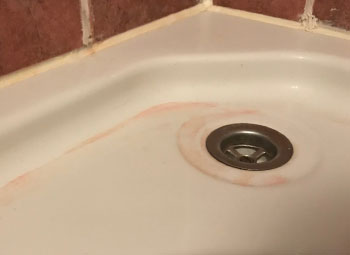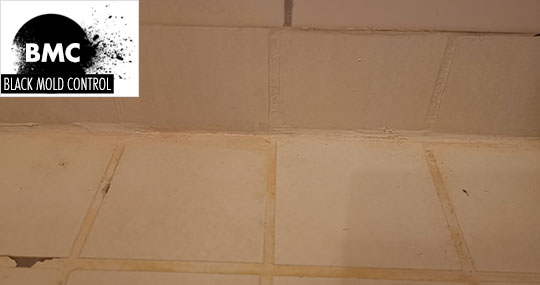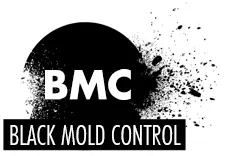 Mold comes in all different colors one common mold found in showers is pink mold (or pink mould).
Mold comes in all different colors one common mold found in showers is pink mold (or pink mould).
What is pink mold?
Many people ask: “what is pink mold?” or “what is that pink mold in the shower?”. This pink colored fungi, with official name Serratia marcescens, is involved in different infections in the human body, most commonly urinary tract infections and wound infections. It is commonly found in hospitals and other areas where infections are common(or commonly treated).
Where does pink old grow?
It prefers damp conditions and is found in many bathrooms and high concentrations were present in many hospital showers, it is commonly found growing in tile grout, shower corners and even in the toilet. It feeds off of common bathroom substances such as soap and shampoo residue.
Read our detailed guide on how to remove mold from grout.
Pink mold in shower, what to do?
If you have pink mold in your shower you should clean the shower thoroughly with a tub and tile cleaner. This fungi feeds on moisture and soap or shampoo residue. Obviously within the shower you cannot remove the moisture, so you have to remove the food in form of the soap residue. After the initial pink mold removal continue to clean your shower at least weekly (twice a week if it is extra humid).

Is pink mold dangerous?
Pink mold can be fairly harmless for individuals who are healthy. People that already have a compromised immune system can be vulnerable, that is why it is important hospitals eliminate pink mold within their bathrooms. The other group of people that are affected by pink mold in their bathroom or shower are people who are highly allergic to mold spores. Obviously, if you do have pink mold you want to get rid of it as fast as possible but do not be alarmed. Want to know more about possible infections from Serratia marcescens? Read this in-depth article. Not sure if black mold is dangerous? Read this article.
How to get rid of pink mold?
If you find pink mould in your bathroom, in your shower or near your toilet understand it can be hard to eradicate once established, the quicker you take care of the problem the less of a chance it has had to grow and spread. These tips are very similar to our black mold removal tips.
To remove this type of fungi from the area apply a bleach based disinfectant, completely rinse the surface and repeat the bleach application, rinse again and fully dry the area. This will clean the mold and remove it’s soap and shampoo food source.
How to prevent it from returning?
The best way to prevent the mold from returning in your bathroom is to clean with a bleach based cleaner weekly, making sure to remove soap and shampoo residue. This will remove the mold’s food source, without the food it cannot continue to grow. Also make sure you bathroom fan is strong enough and functioning properly. By removing the moist humid air this will help minimize any mold growth including Serratia marcescens.
What if the mold returns?
In high use bathrooms which experience a lot of soap and shampoo usage and continued humid warm conditions sometimes no matter how careful you are the mold could return. It is recommended that if it does return clean it again with the bleach based cleaner (possibly with a higher concentrated one), also consider installed a fan that removes more air from the room at a time. Some of the low end bath fans do not remove the air quick enough. Also ensure after individuals shower they leave the fan run for at least a half hour afterward.
Questions and answers from readers
You are not the only one facing pink mold. See what other homeowners have to say.
From Sandy
I have this problem in nearly every surface in my house that comes into contact with water. My problem is that I can scrub it off of smooth surfaces easily enough, and I can kill it with bleach. However, on surfaces that are not perfectly smooth (like tiny imperfections in the caulk) it just turns black after being treated with bleach, and I can’t get it to scrub off. I’m pretty sure it isn’t just a kind of black mold, since it doesn’t spread, and it only turns black after I treat it with bleach or other bathroom cleaner. Any suggestions?
Our response:
Unfortunately in this case the best way to handle this in our opinion is to remove the caulking, likely it was a cheaper grade caulking used. Lowes or Home Depot sells mold resistant bathroom caulking that is much better at keeping mold from growing. Do you have black mold on caulking? Read our guide: how to remove black mold from shower caulk.
From Charlene
Bleach does NOT kill the mold – it only removes the color. You need to use something like vinegar to actually kill it.
Our response
I respectfully disagree. Pink mold is a surface mold, it grows on the soap scum and shampoo residue mostly on a hard surfaces(corner of showers, tile etc). Removing the soap scum/residue will remove the mold food source. Now if we are talking about mold removal on other surfaces, drywall, wood etc. I agree do not use bleach as the mold is growing within the fibers of the material.
From Robert
I find pink mold in my dog’s water bowl every time I give him new water. I clean it out and it always comes back. I should bleach it right? Because couldn’t that harm him? I’m not sure what I should do about this, thanks for any help!
Our response
What material is the water bowl made out of? If it is plastic I would recommend switching to a stainless or glass bowl. You can use a diluted bleach solution to clean out the bowl just rinse it completely after cleaning.
From Alexia
I have a very annoying pink mold problem in my apartment, anywhere there’s water, including on my faucets, where the water comes out. How is it feeding on any soap there? The only soap i ever put on that area is disinfectant wipes or bleach. Also, should i assume that i have some sort of infection that caused the mold in the first place? I would know if i had an infection, right? Yikes!!
One more question – If it’s on the faucets where the water comes out, it’s probably inside the faucets, too, right? How would i be able to clean inside the faucets? Should i consider just replacing the fixtures?
Our response
Sorry to hear about your mold problem. Are you sure it is pink mold coming from your faucet is it possible it is some type of mineral buildup? The first steps I would take is clean your bathroom floor to ceiling. Areas where their are tile or surfaces that will not be ruined clean with a bleach based cleaner. Does your bathroom have a fan in it that draws moisture/warm air out? If it does I would run it while you are showering and leave it run for a half hour after the shower. This will help remove moisture and the warm humid air from your bathroom. If you do not have a fan and have a window open it a crack to help let the warm moist air out. Pink mold really isn’t that harmful from a medical standpoint (when compared to black mold) from what I have read (I am not a doctor) and the best way to rid your bathroom of it is do the above and just keep up on it from a cleaning standpoint.
Respons Alexia
Thanks for the reply. I’m not absolutely positive that what’s on my faucets is pink mold- but i can’t find any info about there being any pink mineral deposits. What i see is a light pink, gooey substance, and i do see it around the drains as well, where it would be able to feed on soap. I do have a ventilator (no window) which i run while in the shower, and for at least a half hour after.
I have also cleaned my bathroom with disinfectants and bleach, but the problem returns. That’s why i asked if the mold could be inside my faucets, where i can’t clean it away. Oh well, I can’t really afford to replace all the fixtures, so i’ll look into buying a dehumidifier and i’ll keep up the cleaning i’m doing now. Also, i asked about how the mold is “involved in different infections” – You wrote that the mold is often found in hospitals, so i’m wondering if the mold is a result or a cause of infections…
Our response
Correlations have been found between this type of mold and causing human infections, for example urinary tract infections, wound infections, and gastrointestinal system problems, but it affects different people differently. If you or your family are experiencing any health related issues that are ongoing and the believed presence of mold I would contact your doctor for further suggestions.
From Bertrand
I have a question about pink mold. I have it in all my bathrooms, mostly in the toilets (even the ones that we use daily), but also in my son’s humidifier. This was a brand new humidifier and don’t know how any soapy like residue would be on it. So I was wondering if you knew how it got there and if there is some kind of system that I could put on my water line to treat this problem?
Our response
This is likely a white water mold (even though it appears to be pink when looking at it). The best way to get rid of it and keep it from coming back is to clean everything with a bleach solution. You have to really clean everything and keep up the cleaning at frequent intervals to keep it from coming back.
From Kaitlin
I just learned about pink mold in bathrooms. My husband and I both suffer from cellulitis and have not been able to find the source until now. You can bet it will be cleaned thoroughly with a bleach. Since we had our new shower installed last year, i have noticed that there is water standing ion the shower floor. Can’t do much about that, just make sure it is cleaned and dried after showers.
Our response
For sure. As for the standing water on the floor of the shower if they make these highly absorbent mini backpacking towels that suck up water like crazy. They work great to snag that last little bit of water that comes to rest in the bottom of the tub.
From Mark
I have lived in several different places in my city and we bought a place in the country and built a new home. My wife and I did not want a well so we put in a cistern and we have city water delivered to us. My wife is a clean freak and inside our toilet tank we started to see like a black slimy substance and inside our toilet bowl, shower stalls, and dog dish we are seeing a pink slimy substance. We clean it with bleach, but it keeps coming back. We also noticed that the waterflow out of our bathroom faucets was not right, so I took the spout part apart and noticed that the screen part was clogged up with black slimy substance. What can I do to take care of this problem? Is there some type of filter we can put on this system or add something to they cistern to eliminate this problem we have?
Our response
I am not an expert with water filtration or cisterns, if there is a professional in your area that is familiar with them it may pay to have them come out and see your setup, have the water tested and see if a whole house filtration system makes sense. How old is your cistern and has it been cleaned/disinfected lately? Possibly consider if you haven’t already done so having your water tested. I realize it is trucked in from the city but there could be numerous issues, the cistern might need cleaned, what about the vehicle hauling the water out to your place, possible it’s holding tanks have bacteria or mold. Hopefully some of this helps, overall this is something you should get together with a couple professionals who have experience with cisterns, filtration systems etc…
